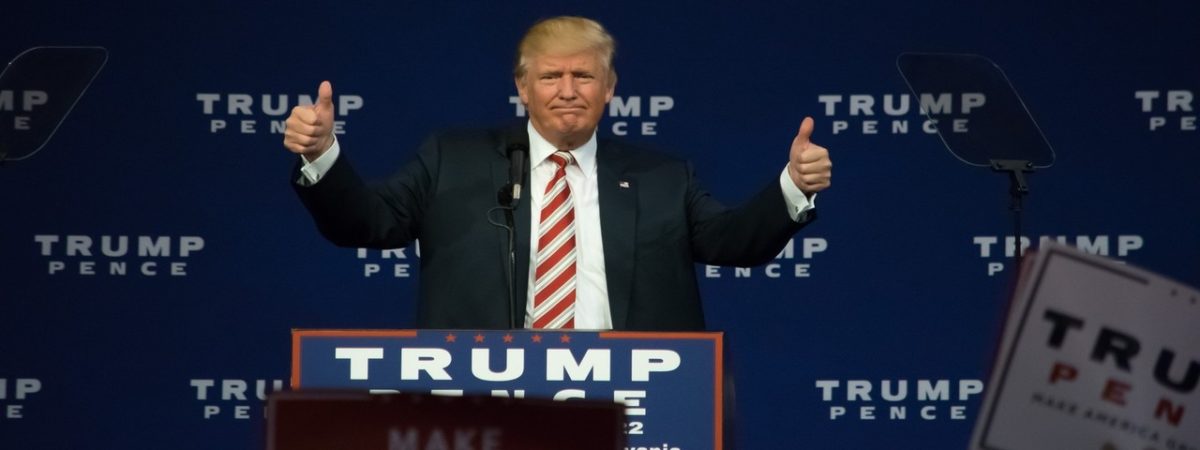Tariff walls and trade wars equal government planning (Part 1)
SUGGESTED



But besides this, protectionist policies also introduce forms of government economic planning. The visible hand of the State replaces Adam Smith’s “invisible hand” of spontaneous market interactions in which everyone makes and directs his own plans about what to produce, where to do the producing, and with whom.
Trump’s Trade War Threats
This is seen in the recent trade row between the United States’ and Chinese governments. It was set into motion by President Trump, who insisted that China was taking advantage of the United States. The core indication of such nefarious conduct, in Trump’s eyes, is the 2017 $337 billion trade deficit. That is the amount by which the United States buys more of Chinese goods than the Chinese purchase of U.S. goods.
President Trump first threatened to impose $50 billion of new or higher tariffs on Chinese goods entering the U.S. if the Chinese did not mend their ways. When the Chinese government responded with a list of American goods upon which they would impose retaliatory tariffs of comparable value, Trump raised the tariff threat against Chinese imports to a value of $150 billion. This brought an indignant reply from Beijing that, while they wished no trade war with the United States, they were not going to bullied or humiliated by Washington—there had been enough of that by Western nations during the imperialist age of the 19th and early-20th centuries.
Both sides decided to try to tone down the threats they were throwing at each other. An American delegation went off to Beijing for trade negotiations with their Chinese counterparts. (Supposedly, according to some news stories, members of the American delegation spent some of the time yelling accusations at each other for being either “too soft” or “too hard” in the talks, but with all the Americans determined that China had to stop being a “bad” trading partner.)
A Chinese trade delegation reciprocated in the middle of May with a visit to Washington, D.C., to continue talks about cutting a deal that would head off any potential trade war that both sides said they did not want, but were willing to fight if “the other side” made it necessary. The Chinese said they would attempt to increase the number of goods purchased from the United States so to move in the direction of reducing the trade deficit; a member of the Trump Administration asserted that the Chinese had promised to reduce that $337 billion trade deficit by $200 billion within a relatively short period of time. Before heading back to China, one of the Chinese delegates insisted that no such hard target number had been agreed to and was a provocative claim by the Trump Administration to try to pressure China and look good in the eyes of Trump’s supporters at home.
Trade Restrictions Are Government Planning
But whether a “direction” or a “hard target,” the presumption by both the American and Chinese was that China would buy more of America’s finished goods, and American businesses would be selling more of various types of such goods in China, as a consequence. Now, all of this would raise little or no concern if the U.S. and Chinese governments had simply determined to institute a policy of greater freedom of trade.
But this is not what either the Trump Administration or the Chinese government authorities have in mind. In the joint communiqué issued at the end of these recent trade talks in Washington, the Chinese government said:
“To meet the growing consumption needs of the Chinese people and the need for high-quality economic development, China will significantly increase purchases of United States goods and services. This will help support growth and employment in the United States.”
This includes “meaningful increases” in U.S. agriculture and energy exports, the joint statement explained. An American team will return to Beijing in the near future to work out the details of which U.S. farm and energy products the Chinese will buy more of and from whom. The Wall Street Journal reported that the U.S. Department of Agriculture has approached a group of farm producers to determine which agricultural crops could be increased the fastest to increase sales in China to meet any Chinese import targets for more American farming products.
On May 20, 2018, U.S. Treasury Secretary Steven Mnuchin said that the Trump Administration had specific “targets” for increased Chinese purchases of American goods, and the government has gone through designing the list of what the Chinese will buy, “industry by industry.” The government’s “plan” is for a detailed micro-management of trade patterns between the U.S. and China.
On the other hand, if the trade talks fall through, the Chinese government has made up a list of which American goods would be barred from being sold in China, or at least not to the same degree as now through the institution of their own higher tariffs. Beijing early on made it clear that their import restriction list would be targeted on those sectors of the U.S. economy that were big supporters of Trump in the 2016 election, the goal being to hurt those upon whom Trump would be dependent for a successful reelection in 2020. (Oh, no, China is threatening to use its trade restriction policies to influence a U.S. presidential election if a trade war breaks out! We need a special prosecutor to see if the Democratic Party is colluding with the Chinese government to bring down Donald Trump!)
Continue to Part 2.
This article was originally published by the Foundation for Economic Education (FEE).



